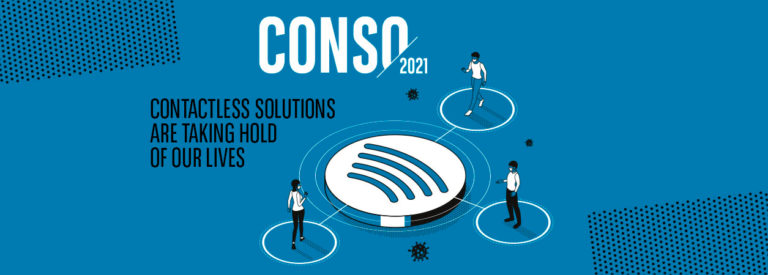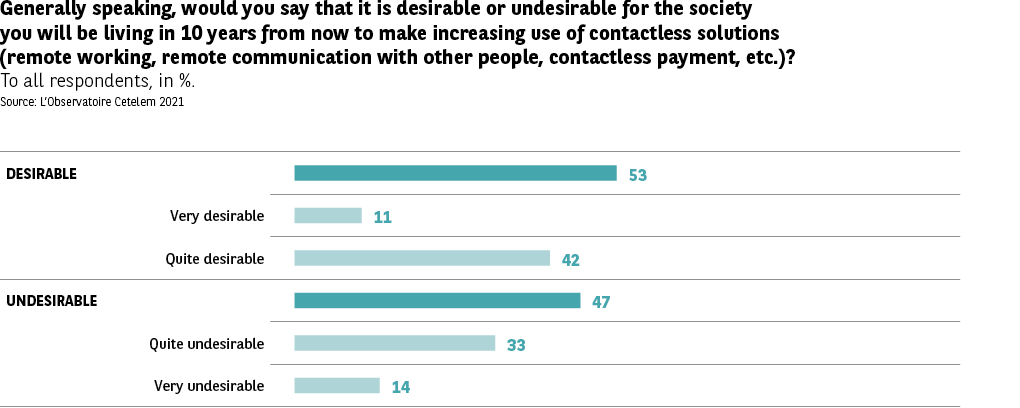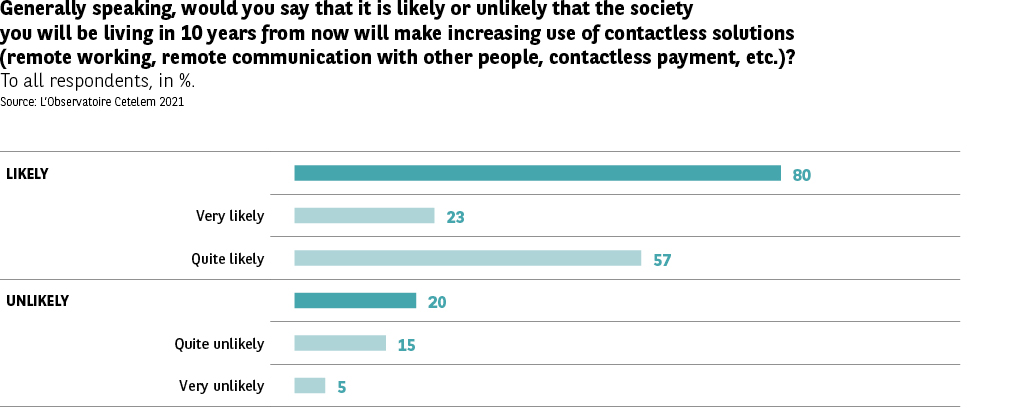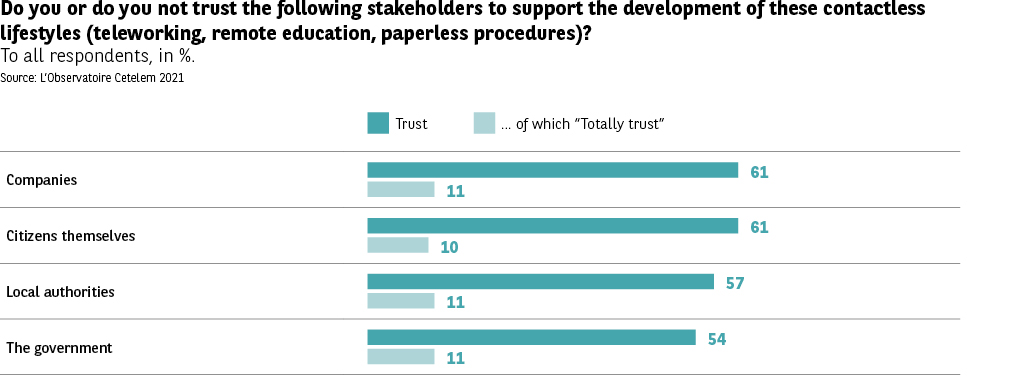An unavoidable development that leaves much to be desired


Contrasting levels of desirability
Aware of both the practical benefits of contactless living and the social frustrations it generates, it is difficult for Europeans to say whether they would like to see it develop in the future. As a sign of their ambivalence, a very slim majority (53%) want society to place an increasing emphasis on contactless methods over the next 10 years (Fig. 34). The most resistant to this kind of change are the Romanians, Bulgarians, Italians and French (44%, 45%, 45% and 47%). The Spanish are the most positive about these advances (63%), followed by the virtual-loving British (60%).
An increasingly likely reality
While opinion is split on whether more contactless solutions are desirable, there is no doubt in people’s minds that this eventuality will become a reality. 8 out of 10 Europeans believe it likely that they will become increasingly present (Fig. 35). On this point, all the countries are in agreement, with only Romania again lagging slightly behind (72%).
Trust is placed in citizens and companies
While they feel it is inevitable that contactless practices will expand, despite the questions raised on matters such as security and privacy, Europeans do not express the same level of confidence when it comes to controlling their development.
The three countries in the Northern group all agree that companies, citizens, local authorities and governments will be able to meet this challenge. As a country in which particular emphasis is placed on social consensus and individual responsibility, Sweden has by far the most confidence in these stakeholders. The Central European countries, particularly Bulgaria and Romania, are much more sceptical.
Looking at the breakdown, Europeans appear to place most hope in companies and citizens (Fig. 36). They garner positive opinions in 61% of cases, with businesses securing the highest levels of trust in Sweden (74%) and citizens topping the list in the UK (72%). Meanwhile, the Italians and Czechs are more reserved.
With the exception of several Central European countries, as well as Spain, local authorities are viewed as more likely than not to contribute to the development of contactless practices in a beneficial way. Once again, mistrust is strongest in Central Europe. This feeling even turns to suspicion when it comes to the question of governments’ ability to support this change in a way that is beneficial. Indeed, only 31% of Poles trust their government, a figure that is probably not unrelated to the societal upheaval currently shaking their country.
KEY FIGURES
- Only 44% of Europeans believe that remote human relationships work well.
- 3 out of 4 Europeans declare that life without physical contact weakens human relationships
- 57% of Europeans state that they regularly replace physical interaction with virtual communication
- 6 out of 10 people trust companies and citizens themselves to contribute to the development of contactless solutions
- 80% of Europeans think it is likely that society will place a greater emphasis on contactless practices in 10 years’ time
- Only 53% of people want society to place an increasing emphasis on contactless methods over the next 10 years.



